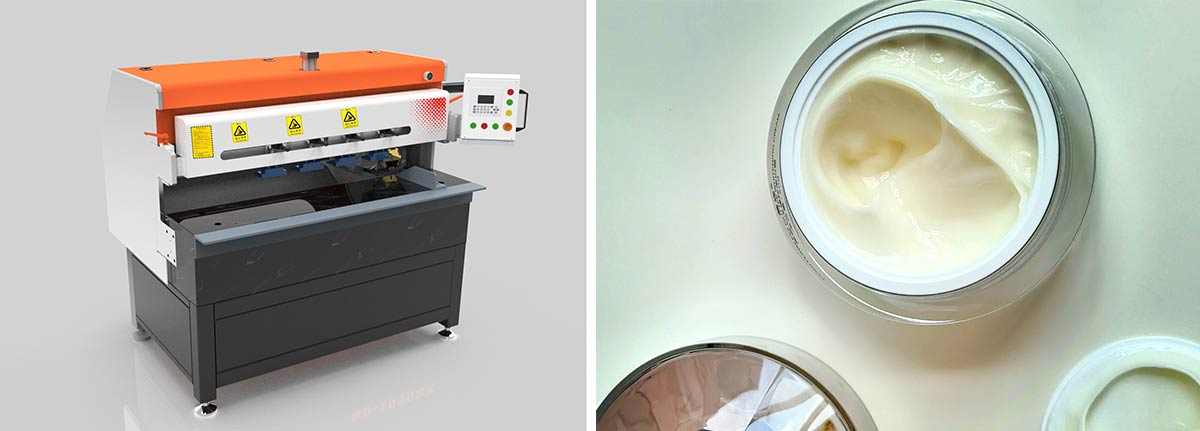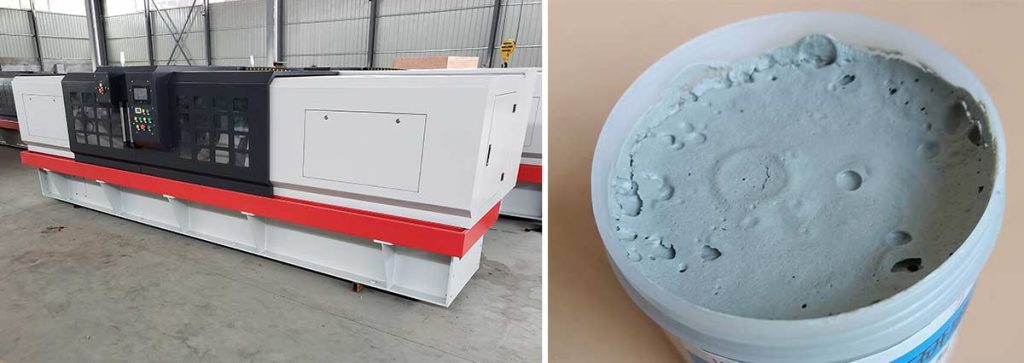

Proper storage plays a critical role in preserving the quality of a buffing compound for metal. Exposure to unfavorable conditions can cause these compounds to degrade, reducing their effectiveness. Storing them correctly ensures consistent performance and extends their lifespan, which saves money over time. Using airtight containers, controlling environmental factors, and organizing materials systematically are essential practices. These steps help protect the compounds from moisture, contamination, and temperature extremes, keeping them in optimal condition for long-term use.
Key Takeaways
- Keep buffing compounds in sealed containers to block moisture and dirt. This helps them stay useful and ready to use.
- Store them in a cool, dry place with steady temperatures. Avoid heat, cold, or sunlight to keep them in good shape.
- Write clear labels with the compound type and storage date. This makes it easy to organize and use older ones first.
- Check stored compounds often for damage or changes. Finding problems early stops waste and keeps polishing results steady.
- Use older compounds before newer ones to avoid waste. This keeps them working well and helps with metal care.
Understanding Buffing Compounds
What Is a Buffing Compound for Metal?
A buffing compound for metal is a specialized material used to polish and refine the surface of metal objects. It typically comes in solid bars or paste form and contains abrasive particles. These particles help remove imperfections, scratches, or oxidation from the metal surface. By applying the compound during the buffing process, users can achieve a smooth, shiny finish. Buffing compounds are essential for industries that require high-quality metal finishes, such as automotive, jewelry, and manufacturing.
The Role of Buffing in Metal Maintenance
Buffing plays a critical role in maintaining the appearance and functionality of metal surfaces. Over time, metal can develop tarnish, scratches, or dullness due to exposure to environmental factors. Buffing restores the original luster and smoothness of the metal, enhancing its aesthetic appeal. It also helps protect the surface by removing contaminants that could lead to corrosion. Regular buffing ensures that metal components remain durable and visually appealing, making it an essential step in metal maintenance.
Types of Buffing Compounds and Their Applications
Buffing compounds come in various types, each designed for specific applications. Common types include:
- Tripoli Compound: Ideal for removing scratches and preparing metal for finer polishing.
- White Rouge: Used for achieving a high-gloss finish on softer metals like aluminum or brass.
- Green Compound: Suitable for stainless steel and harder metals, offering a mirror-like shine.
- Crankshaft Polishing Compound: Specifically formulated for polishing crankshafts and other engine components.
Each type of buffing compound for metal serves a unique purpose, ensuring that users can achieve the desired finish for their specific project. Selecting the right compound is crucial for optimal results.
Tip: Always match the buffing compound to the type of metal and the level of polishing required to avoid damaging the surface.
Crankshaft Polishing Compound and Its Uses

A crankshaft polishing compound is a specialized material designed to restore the surface of crankshafts and other engine components. Crankshafts play a vital role in internal combustion engines, converting linear motion into rotational energy. Over time, these components can develop imperfections such as scratches, grooves, or uneven surfaces. Using a crankshaft polishing compound helps eliminate these flaws, ensuring the crankshaft operates smoothly and efficiently.
This compound contains fine abrasive particles that gently remove surface irregularities without damaging the crankshaft. During the buffing process, the compound works to refine the surface, creating a polished finish that reduces friction and wear. This step is essential for maintaining engine performance and extending the lifespan of critical components.
Crankshaft polishing compounds are commonly used in automotive repair shops, manufacturing facilities, and engine rebuilding projects. Mechanics often apply the compound using a buffing wheel or a specialized polishing tool. The process requires precision to achieve the desired results without over-polishing or causing uneven wear.
One of the key benefits of using a crankshaft polishing compound is its ability to enhance engine efficiency. A smooth crankshaft surface minimizes resistance, allowing the engine to run more effectively. Additionally, regular buffing with this compound helps prevent long-term damage caused by surface imperfections.
To achieve the best results, users should select a crankshaft polishing compound that matches the material of the crankshaft. Proper application techniques and consistent maintenance ensure the compound delivers optimal performance. By incorporating this compound into routine engine care, users can improve reliability and reduce costly repairs.
Note: Always follow the manufacturer’s guidelines when using a crankshaft polishing compound to avoid unintended damage.
Why Proper Storage Is Essential?
Factors That Affect Buffing Compound Longevity
Moisture and Humidity
Moisture can significantly impact the quality of buffing compounds. When exposed to high humidity, these compounds may absorb water, altering their texture and consistency. This can make them harder to apply evenly during the buffing process. Over time, moisture can also lead to the growth of mold or mildew, which contaminates the compound and reduces its effectiveness. Storing buffing compounds in airtight containers helps prevent moisture from seeping in, ensuring they remain in optimal condition.
Temperature Extremes
Extreme temperatures can cause buffing compounds to degrade. Excessive heat may soften the compound, making it sticky and difficult to handle. On the other hand, freezing temperatures can cause the compound to harden or crack, rendering it unusable. Maintaining a stable, moderate temperature in the storage area is crucial for preserving the compound’s usability. A cool, dry location is ideal for long-term storage.
Contamination Risks
Contamination poses another threat to the longevity of buffing compounds. Dust, dirt, and other foreign particles can mix with the compound, reducing its polishing effectiveness. Contaminated compounds may scratch the surface of the metal instead of smoothing it. To avoid this, users should always seal containers tightly after use and store them away from areas prone to debris. Keeping different types of buffing compounds separate also prevents cross-contamination.
How Buffing Compounds Degrade Over Time?
Drying Out and Crumbling
Buffing compounds can dry out when exposed to air for extended periods. This causes them to lose their pliability and crumble into pieces, making them difficult to use. Once a compound dries out, it cannot adhere properly to the buffing wheel or the metal surface, leading to uneven results. Using airtight containers minimizes air exposure and helps maintain the compound’s original texture.
Reduced Polishing Effectiveness
As buffing compounds degrade, their ability to polish metal diminishes. A dried-out or contaminated compound cannot deliver the smooth, shiny finish it once provided. This forces users to apply more effort and time during the buffing process, which reduces efficiency. Proper storage ensures the compound retains its abrasive properties, allowing it to perform consistently over time.
Tip: Regularly inspect stored buffing compounds for signs of degradation. Early detection can help prevent waste and ensure the compounds remain effective.
Best Practices for Storing Buffing Compounds
Selecting the Right Storage Containers
Airtight Containers for Moisture Control
Airtight containers are essential for preserving the quality of a buffing compound. These containers prevent moisture from entering and altering the compound’s texture. Exposure to humidity can cause buffing compounds to become sticky or unusable. Plastic or glass containers with tight-sealing lids work well for this purpose. Users should ensure the container is completely dry before storing the compound to avoid introducing moisture.
Avoiding Fragile or Non-Sealable Packaging
Fragile or poorly sealed packaging increases the risk of contamination and degradation. Buffing compounds stored in thin plastic bags or damaged containers may crumble or dry out. Durable, resealable packaging ensures the compound remains intact and ready for use. Investing in high-quality storage solutions protects the compound and reduces waste.
Controlling Environmental Conditions
Cool, Dry Storage Locations
Buffing compounds perform best when stored in cool, dry environments. Excessive heat can soften the compound, while cold temperatures may cause it to harden. A stable temperature prevents these issues and ensures the compound remains pliable. Storing compounds in a workshop cabinet or a climate-controlled area helps maintain their usability.
Avoiding Direct Sunlight and Heat
Direct sunlight and heat can degrade buffing compounds over time. UV rays may break down the compound’s structure, reducing its effectiveness. Placing the containers away from windows or heat sources, such as radiators, protects the compound. A shaded, ventilated area is ideal for long-term storage.
Organizing and Labeling Buffing Compounds
Clear Labels with Dates and Types
Proper labeling simplifies the organization of buffing compounds. Each container should include a label with the compound type and the date it was stored. This practice helps users identify the right compound for specific tasks, such as buffing stainless steel or achieving a mirror finish polishing. It also ensures older compounds are used first, reducing waste.
Separating Different Compounds
Storing different buffing compounds separately prevents cross-contamination. Mixing compounds can alter their properties and reduce their effectiveness. Users should dedicate individual containers to each type of compound. For example, compounds used for polishing stainless steel should not be stored with those designed for softer metals. This separation ensures optimal performance during the buffing process.
Tip: Regularly inspect storage areas for signs of moisture or contamination. These maintenance tips help preserve the quality of buffing compounds and extend their usability.
Maintaining Stored Buffing Compounds
Regular Inspections for Degradation
Regular inspections help ensure buffing compounds remain effective over time. Users should check for signs of drying, crumbling, or contamination. A degraded compound may lose its ability to create a polished surface, leading to inconsistent results. Inspecting stored compounds every few months can prevent waste and maintain high-quality finishes.
During inspections, users should look for changes in texture or color. A compound that feels brittle or has visible cracks may no longer adhere properly to a clean buffing wheel. Contamination, such as dust or debris, can also reduce the compound’s effectiveness. To prevent cross-contamination, users should wear protective gear like safety glasses and a respirator or dust mask when handling compounds. This practice ensures safety while maintaining the integrity of the materials.
If a compound shows signs of degradation, it should be discarded. Using compromised compounds can damage tools or surfaces, increasing the time spent on maintenance work. Regular inspections save time and money by ensuring only usable compounds are applied.
Rotating Stock for Optimal Use

Rotating stock ensures older buffing compounds are used before newer ones. This practice prevents compounds from sitting unused for extended periods, which can lead to drying or hardening. Users should organize their storage area so older compounds are easily accessible. Clear labels with storage dates simplify this process.
When rotating stock, users should also inspect the condition of the containers. Damaged packaging can expose compounds to air or moisture, accelerating degradation. Keeping storage areas clean and organized helps maintain the quality of the compounds.
Rotating stock is especially important for compounds used in engine maintenance. A fresh compound ensures consistent results when polishing crankshafts or other engine components. This practice supports efficient buffing wheel maintenance and contributes to achieving high-quality finishes.
Tip: Always clean buffing wheels before applying a new compound to prevent cross-contamination and ensure optimal performance.
Conclusion
Proper storage of buffing compounds for metal ensures their longevity and effectiveness. By protecting these materials from moisture, temperature extremes, and contamination, users can maintain their quality and save money over time. Following best practices, such as using airtight containers, organizing compounds systematically, and inspecting them regularly, guarantees consistent results during metal maintenance tasks.
Implementing these tips not only preserves the compounds but also enhances the quality of metal finishes. Readers who adopt these strategies will experience smoother workflows and better outcomes. Start applying these methods today to achieve long-term success in maintaining metal surfaces.
